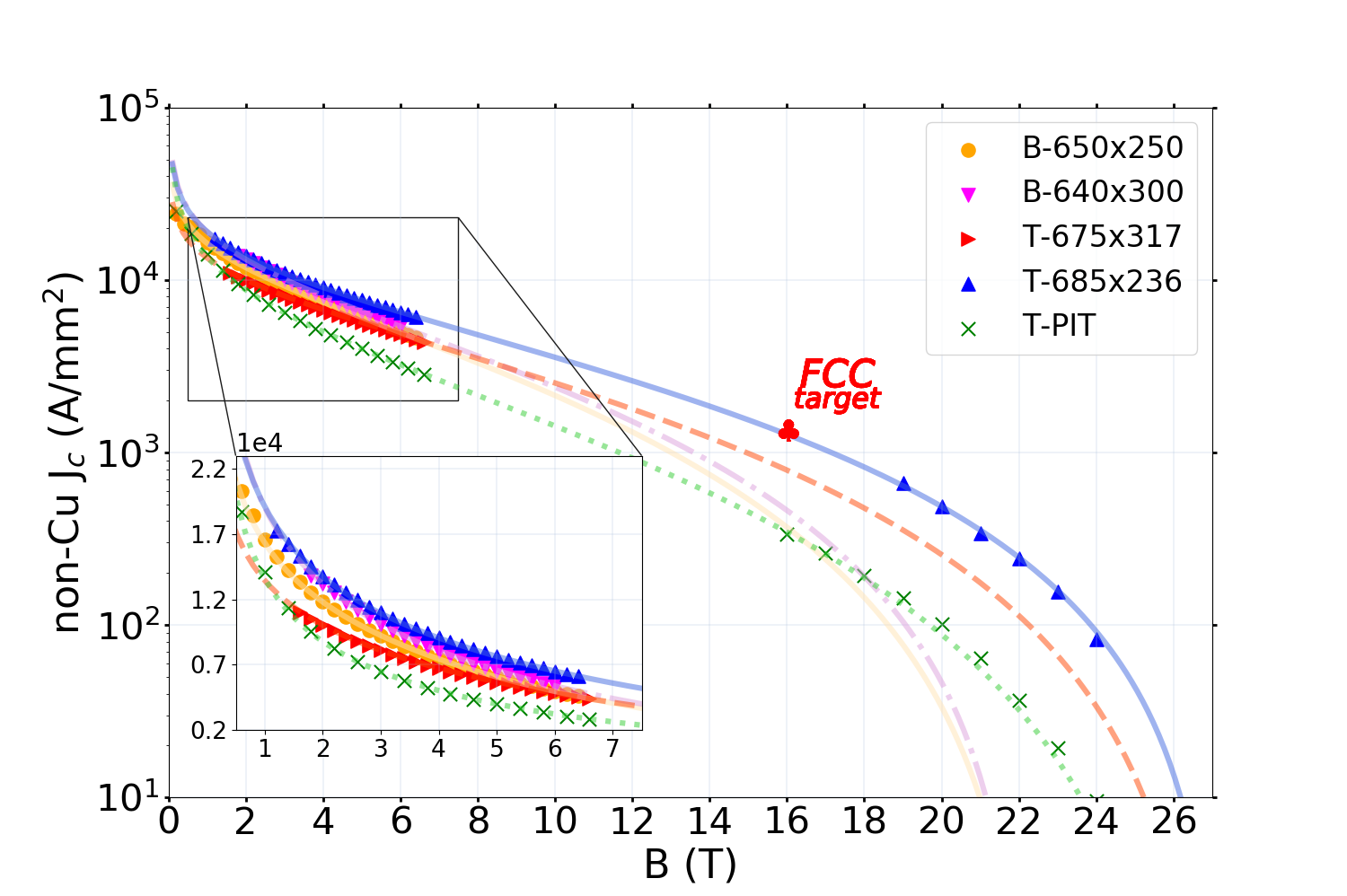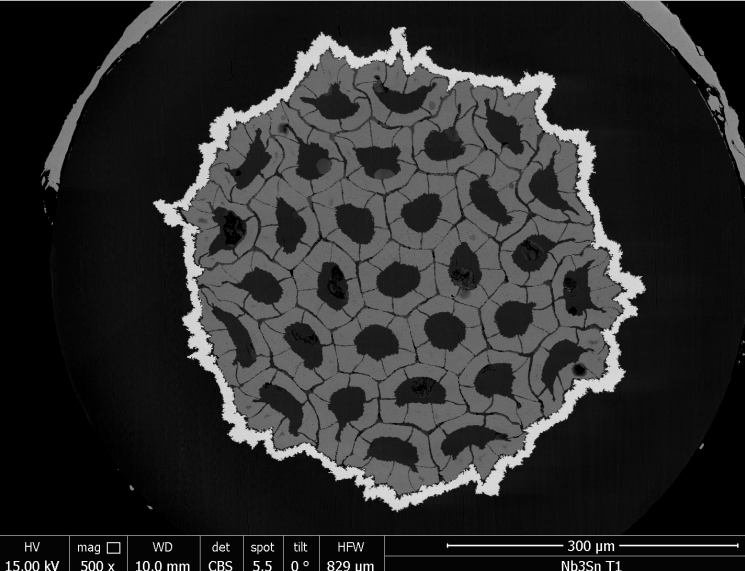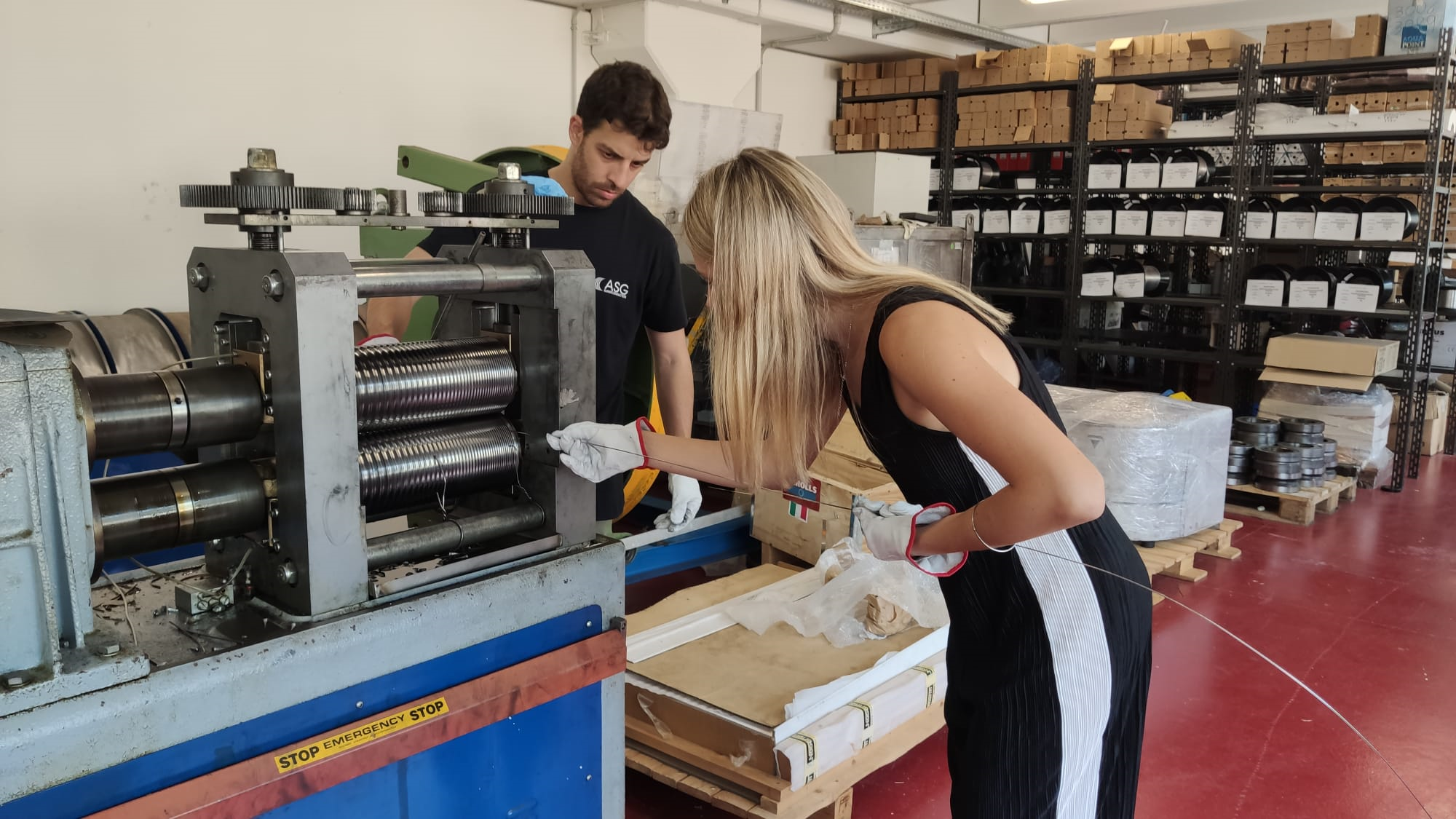The study of the newly designed hh-FCC (“hadron-hadron Future Circular Collider) 16 T dipole magnets brings several challenges to the conductor technology. Nb3Sn is still the leading material in terms of industrially produced conductors for magnet applications within the 10-20 T range. The target of the critical parameter “non-Cu Jc” (i.e. the critical current density Ic divided by the non-copper area of the conductor) is set to 1.5 kA/mm2 at 4.2 K and a magnetic field of 16 T.
Reaching this goal calls for a deeper understanding of the physics at stake in novel manufacturing processes of prototype Nb3Sn wires. Advancing in understanding the fundamental physics involved in these processes could also bring innovative solutions, bridging the gap between commercial conductors and these highly demanding requirements.
Results from a recent study of two different types of Nb3Sn wires by HyperTech Inc. (US) and Bochvar Institute (RU) at the University of Technology - USTEM (University service center for transmission electron microscopy) and the Atominstitut in Vienna were recently published. By investigating several versions of the same wires, we were able to characterize them in terms of magnetic and resistive properties.

The study carried on the development of the Artificial Pinning Centres (APC) Nb3Sn wires (Hyper Tech Inc.) highlights how the yet not optimized ternary wires ( Ta was alloyed for Bc2 increasing) already approached the high Jc FCC-hh requirements at 16 T and 4.2 K. Perhaps not surprisingly, the key driver for this behaviour is the refined grain size together with the clear role played by the nano-inclusions (ZrO2 and HfO2), allowing for record-high critical currents in the operational range of Hi-Lumi and hh-FCC. The potential and limits of these conductors in terms of pinning were evaluated, also addressing the compositional gradients as output of different heat-treatments. The next challenge for our research is to study the wire stability in the range of 12-20 T where the ratio between Cu content/purity and Nb (barriers) will play a crucial role.
The work carried on the TVEL-Nb3Sn samples also led to interesting results, in particular with regard to the possible implications of the “cluster-layout” specimens. The manufacturing still has to deal with longitudinal inhomogeneities within short ranges, which we believe to be related to the temperature uniformity throughout the furnaces rather than a wire-drawing problem. On the other side, the local currents evaluated from SHPM already show a highly competitive Jc, consistent with the specifications of the HL-LHC project.

In addition, a fine superconducting and microstructural characterization of MgB2 samples (CNR-SPIN and ASG Superconductors) was carried out. In this respect, microstructural investigations of different C-doped MgB2 wires produced at CNR-SPIN (Genoa) were accomplished, in order to better understand the C dispersion within the MgB2 matrix. Transmission electron microscopy (TEM) performed on these wires demonstrated the effectiveness of the innovative freeze-drying process (FDP) in producing C nano-aggregates properly distanced from each other, which may have a great potential as pinning centers. This study has thus shown that this new technique, employing the FDP, is very promising and worth further exploration.

The work performed on the ASG-MgB2 samples mainly led to the evaluation of the Jc in the temperature and applied magnetic-field range not exploitable at the manufacturing site (4.2 K – 15 K and 2-7 T, respectively). The results are consistent with the ones obtained from current transport measurements, completing the “Jc map” of the four investigated samples within their potential full range of applications. Finally, the critical temperature and granulometry of several MgB2 prototype powders were also assessed.
Read More:
